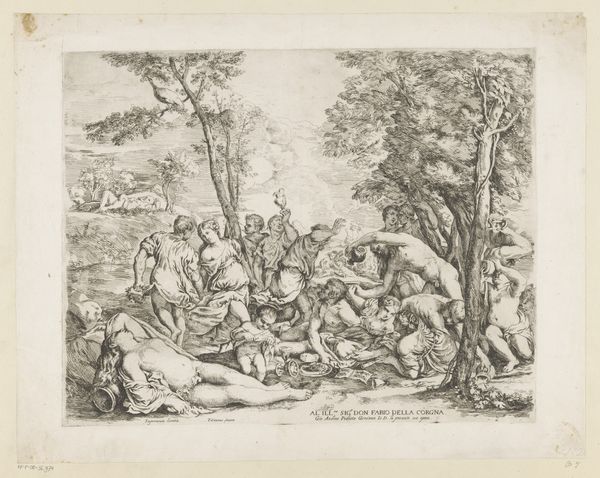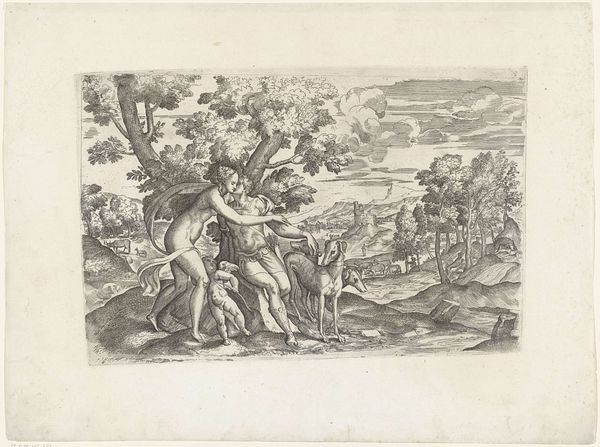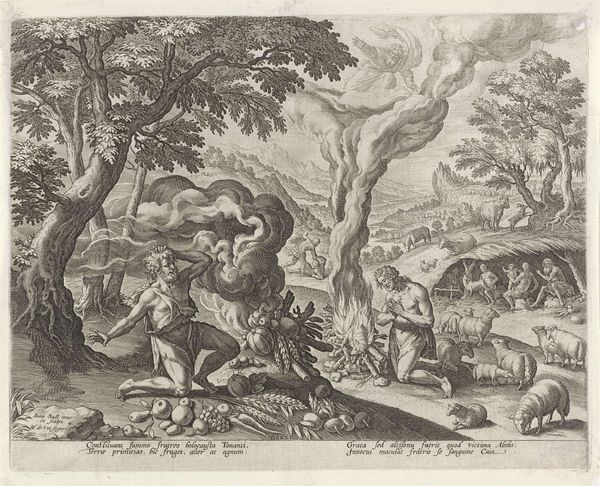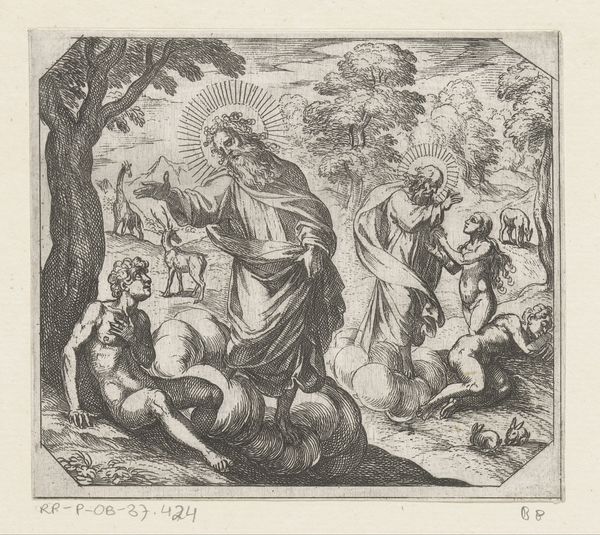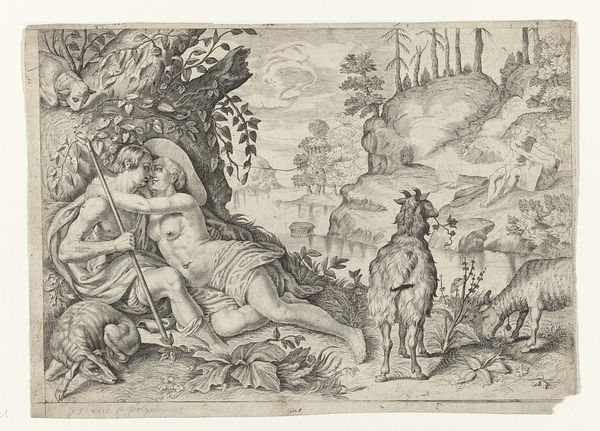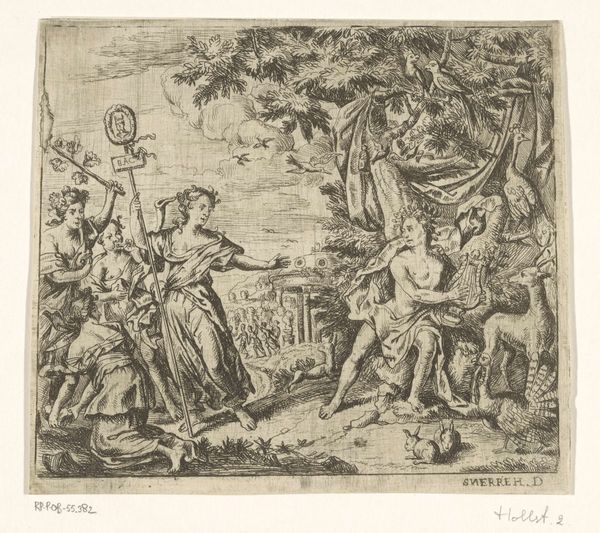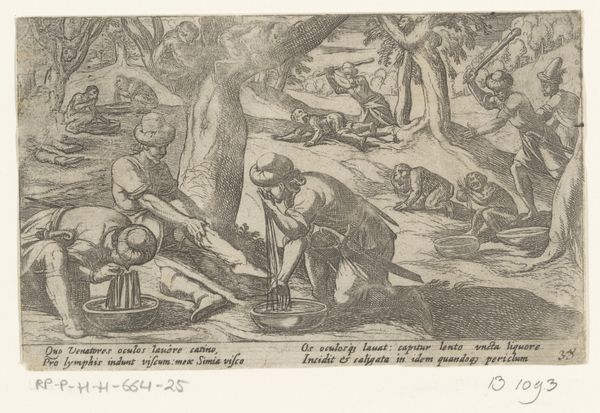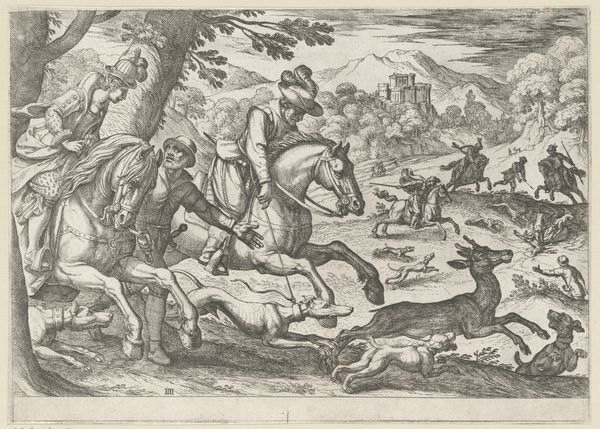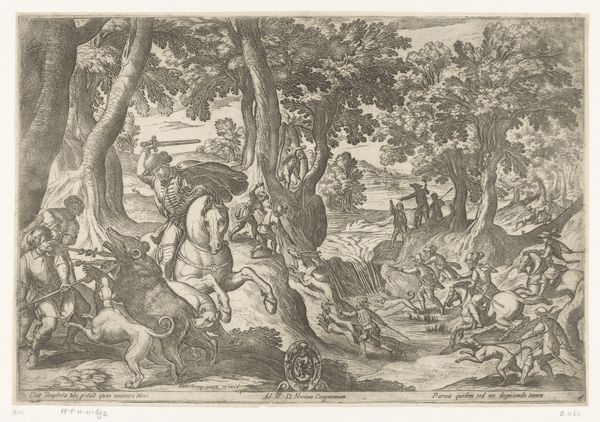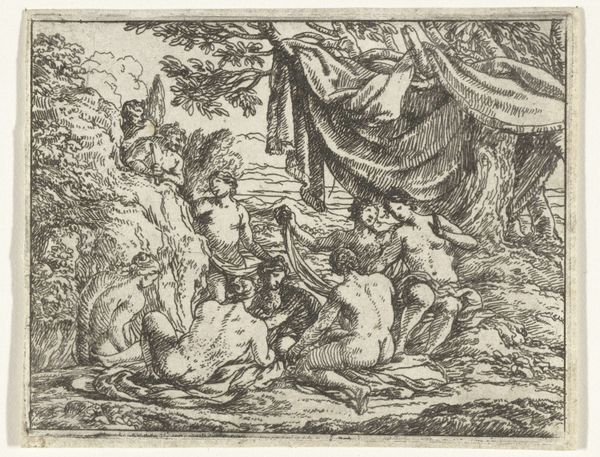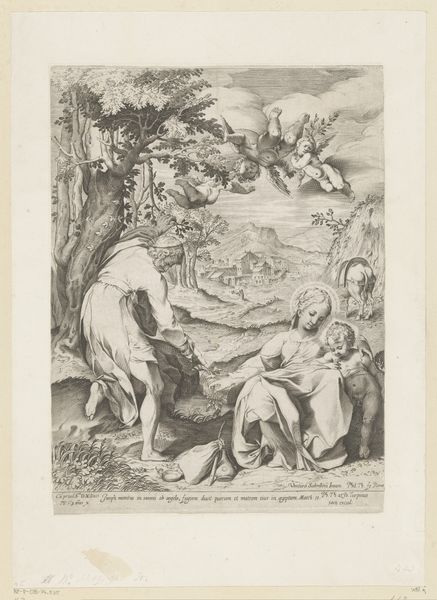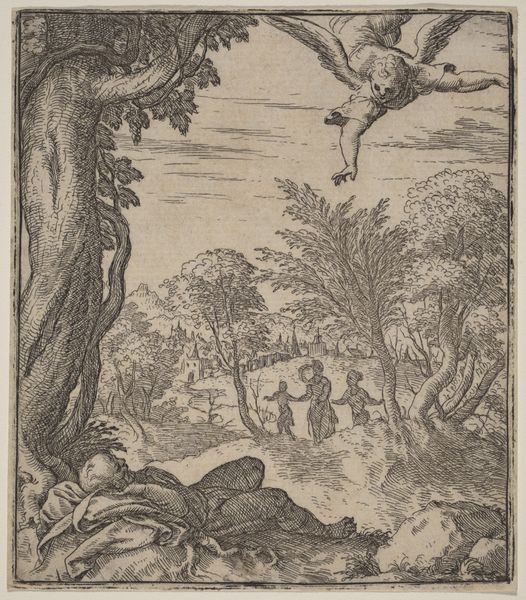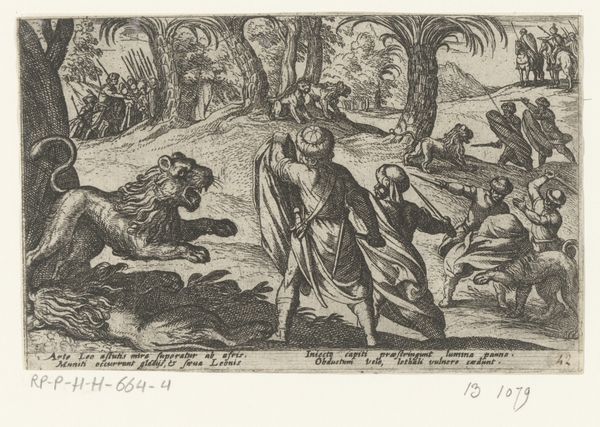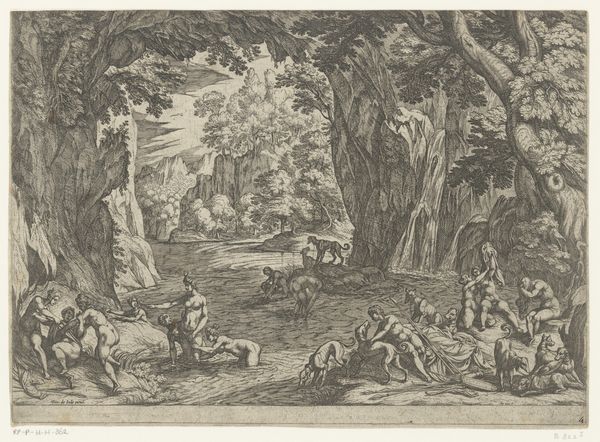
print, engraving
#
allegory
# print
#
pen sketch
#
landscape
#
mannerism
#
figuration
#
history-painting
#
engraving
Dimensions: height 118 mm, width 124 mm
Copyright: Rijks Museum: Open Domain
Curator: Ah, Antonio Tempesta's "The Temptation of Eve." It’s from sometime between 1565 and 1630, currently held in the Rijksmuseum, and rendered through engraving. What are your first thoughts? Editor: My initial thought? The scale is utterly delightful. It feels almost like peering into a meticulously detailed miniature world. But the animals give me the most curious feeling. What’s with that lounging tiger and the giraffe in the background? It’s as if all creation has turned to watch. Curator: Tempesta was quite the storyteller through imagery. Remember, the image operates as a complex allegory. He brings together historical painting conventions with landscape elements, very much a product of his Mannerist leanings. Look at how he uses the engraving technique to create a really dynamic landscape surrounding Adam and Eve. Editor: Absolutely, the cross-hatching really amps up the tension, and those muscular figures! Mannerism, indeed! Do you think he’s making a comment on human hubris? That intense muscularity almost feels like pride right before the fall. And what of the snake-woman… the sinuous line, the feminine mystique? Curator: Definitely. The period grappled with how humanity existed both within and distinct from the natural world. In this, the landscape serves less as a serene backdrop and more as an active participant in the drama. The animals... I see them almost as silent judges or perhaps even victims of the impending Fall. They certainly bring in ideas of nature being in perfect harmony prior to human sin. Editor: Right. And I keep returning to the choice of printmaking. It democratizes the Fall. It is, after all, an image replicated for a broad audience, a constant reminder. Not hidden away on a grand canvas for the elite, but a circulating story. Curator: Exactly! And Tempesta's focus on accessibility underscores the universal nature of temptation and its consequences, reflecting broader anxieties around sin, knowledge, and humanity’s place in the cosmos at that time. Editor: Makes you wonder, doesn’t it, about the societal impact of art then versus now, considering the reach engravings had back then? A beautiful yet somber slice of history caught in these delicate lines. Curator: It truly does. Art's public role in framing, perhaps even dictating, societal norms—it's both powerful and sobering. I am delighted by Tempesta's way of using the image of "The Temptation of Eve" to invite reflection, encouraging us to ask whether humans can learn from the past.
Comments
No comments
Be the first to comment and join the conversation on the ultimate creative platform.
